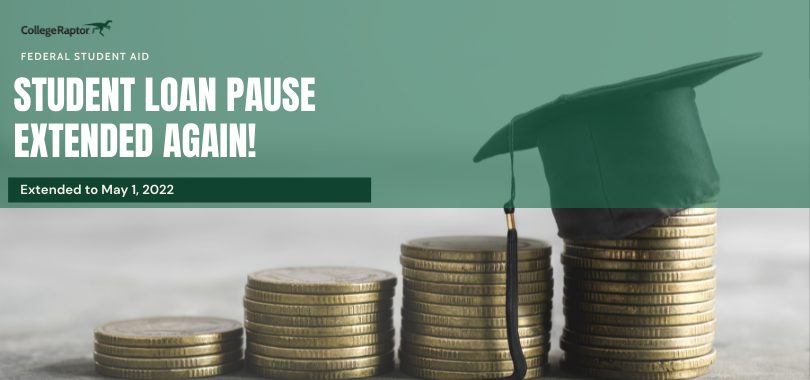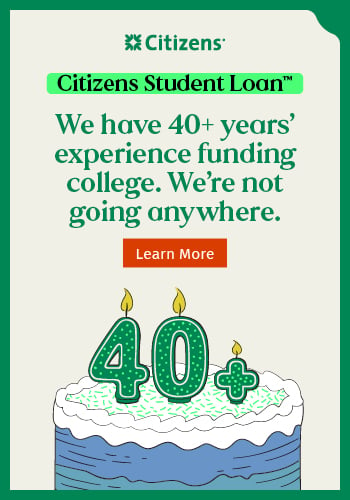If you’ve got federal student loans and are following the latest updates, you’ve definitely heard about the latest student loan repayment extension. On December 21, 2021, President Biden announced that the student loan repayment pause would be extended from January 31, 2022 to May 1, 2022. The additional 90 days of no payments has students across the country breathing a sigh of relief.
So, what exactly does the student loan repayment extension mean for you? Understanding the implications can help you make more informed decisions about how best to leverage this additional time.
Highlights Of The Student Loan Repayment Extension & What It Means For You
During the 3-month extension, the benefits will be the same as they’ve been from the time the payment pause was first announced in early 2020. Here’s a recap of those benefits and what they mean for you:
You continue to get debt relief on qualifying federal student loans – The U.S. Department of Education has automatically placed qualifying federal student loans into ‘administrative forbearance’. This means you don’t have to make any payments on those loans till May 1, 2022. If your payments are set to be made automatically from your bank account, check if any payments have been made after March 10, 2022. That was the date the first student loan repayment pause came into effect. If any payments were made after that date, you may be entitled to get it refunded.
Not all federal student loans are eligible for debt relief – Most federal student loans, except for two, qualify for administrative forbearance. The two loans that don’t qualify are older Federal Family Education Loans (FFELs) and Federal Perkins Loans not held by the Department of Education. If you have loans from these programs, you have to continue making the payments. If you’re not sure whether your loans are eligible for debt relief, call your federal loan servicer and find out. Don’t assume anything. You could be wrong and that would be an expensive mistake.
Qualifying Loans Won’t Collect Interest Either – Besides the payment pause, interest also remains suspended on federal student loans that qualify for debt relief. That means you don’t need to worry about interest accruing during the non-payment years. It also means when payments resume on May 1, 2022, your total outstanding should be the same as it was at the beginning of the pause. Experts recommend keeping a record of your balance before the pause came into effect in March 2020. If there is any discrepancy when payments resume, speak to your lender to resolve the issue.
Garnishment is still suspended too – If you had any federal student loans in default before the pause began, you don’t need to worry about garnishment for another 3 months. The federal government has put its enforcement against defaulted student loan borrowers on hold for the entire duration of the pause. Your payments will be protected from garnishments of tax refunds, wages, and Social Security checks until May 01, 2022. If your employer continues to garnish your wages during this time, you may be eligible to get a refund.
The student loan repayment pause is temporary – It’s been 2 years since the repayment pause was initiated. While it was initially intended to be for only one year, it has been extended several times. The aim has been to continue offering relief to student loan borrowers affected by the ongoing pandemic. However, the student debt relief program will not go on forever. Those payments will become due at some time so you need to be ready.
How To Make Best Use of The 3-Month Student Loan Repayment Extension
The student loan repayment extension has given you another 3 months of no loan payments, no new interest accrual, and no collection of loans in default. How are you going to use this opportunity?
The best thing to do is to develop a strategic plan for paying back your loans. Waiting for the last minute can be a mistake. You’re more likely to make the wrong decision when you’re under pressure.
You still have 3 months. Reevaluate your financial circumstances. Think about your short- and long-term financials goals. Then work out a strategy that will work best for you keeping all of these factors in mind.
Start by creating a spread sheet listing all of your federal and private student loans. Write down the monthly payment amount and due date against each of the loans.
Then take a look at your monthly income, including all sources. From this, deduct your monthly essential expenses such as rent or mortgage payment, utilities, groceries, and transportation. The money that’s left over after paying off all essential expenses is what you have free to put towards your loan.
If you can afford the monthly payments on all loans, you don’t need to do much planning. All you need to do is make arrangements for payments to resume when the pause is lifted. If you have extra cash, consider building or replenishing your emergency fund. You’ll be relieved you did if and when an emergency arises where you need the money overnight. Ideally, an emergency fund should have about 3 to 6 months’ worth of expenses in an accessible savings account.
If you can’t afford the monthly payments on all loans, you’ll have to spend time figuring out what you’re going to do when payments start. Two of the best alternatives to explore are:
- Federal student loan income-based repayment plans – These plans peg your monthly payments as a percentage of your monthly income. This helps to lower the payments, making them more affordable. The advantage of this is it protects your federal student loan benefits, which can be a life-saver should you find yourself in a financial crisis at any time. The downside is that you’ll pay more in accrued interest over the longer term.
- Refinancing your student loans – This involves applying to a private lender to pay off your student loans and issue you a new loan in its place. The new loan will have a new interest rate based on current market conditions as well as your credit score. Choosing lower monthly repayments will make them more affordable. With interest rates at historic lows right low, you’ll save a lot of money when you refinance. The downside is you’ll lose all federal student loan protections.
You’ve devised a repayment strategy that works for you, now it’s time to start preparing for repayment.
Preparing for Repayment with Effect from May 1, 2022
If you haven’t done it already, it’s time to get your ‘ducks in a row’ and make sure you’re prepared when repayments resume. Here are some things you should do to prepare for repayment after the student loan repayment pause ends:
- Find out which lender is associated with each of your loans. Some of the services have been changed during this pause period. Obtaining the names and contact details of your new federal loan lenders is easy. Log in to your account at FederalStudentAid and you’ll find all details of who’s holding your loans.
- Check that each of your loan holders have your correct communication information. This includes your email address, phone number, and postal address. Lenders will send out notifications related to your loan payments closer to the pause end date. You want to make sure you get those notifications.
- Speak to your bank about setting up automatic payments. Just get the information you need for now and submit a formal application once your lender sends you your payment date. Auto payments are a great way to ensure your payments go out on time every month. As an added bonus lenders will often you a rate reduction when you set up auto-pay so you save on the interest too.
- Do you have any loans that were in default when the pause was announced in 2020? The federal government suspended collections while the pause was in effect but they will resume in May. Before this happens, it’s a good idea to rehabilitate any loans that are in default.
President Biden has reiterated that there will be no more student loan repayment extensions. Right now, nobody knows for sure whether or not the pause will be extended some more. Don’t make the mistake of assuming that it will. A smarter strategy would be to use the next 3 months to explore your options and develop a plan that works for you.










